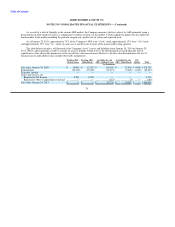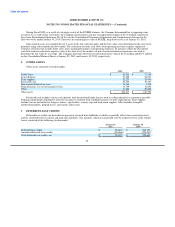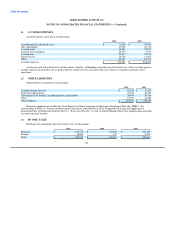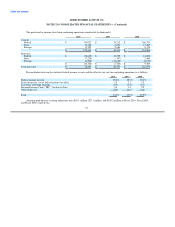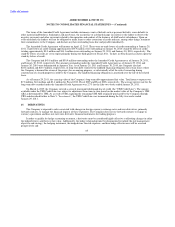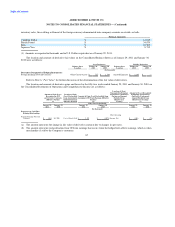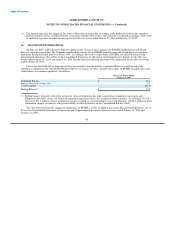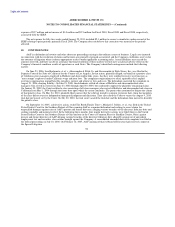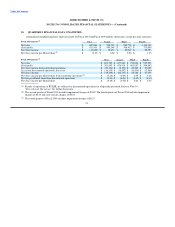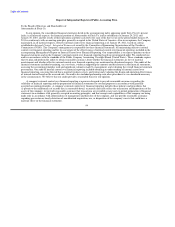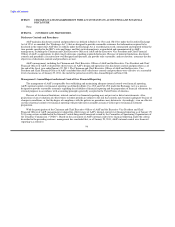Abercrombie & Fitch 2010 Annual Report Download - page 89
Download and view the complete annual report
Please find page 89 of the 2010 Abercrombie & Fitch annual report below. You can navigate through the pages in the report by either clicking on the pages listed below, or by using the keyword search tool below to find specific information within the annual report.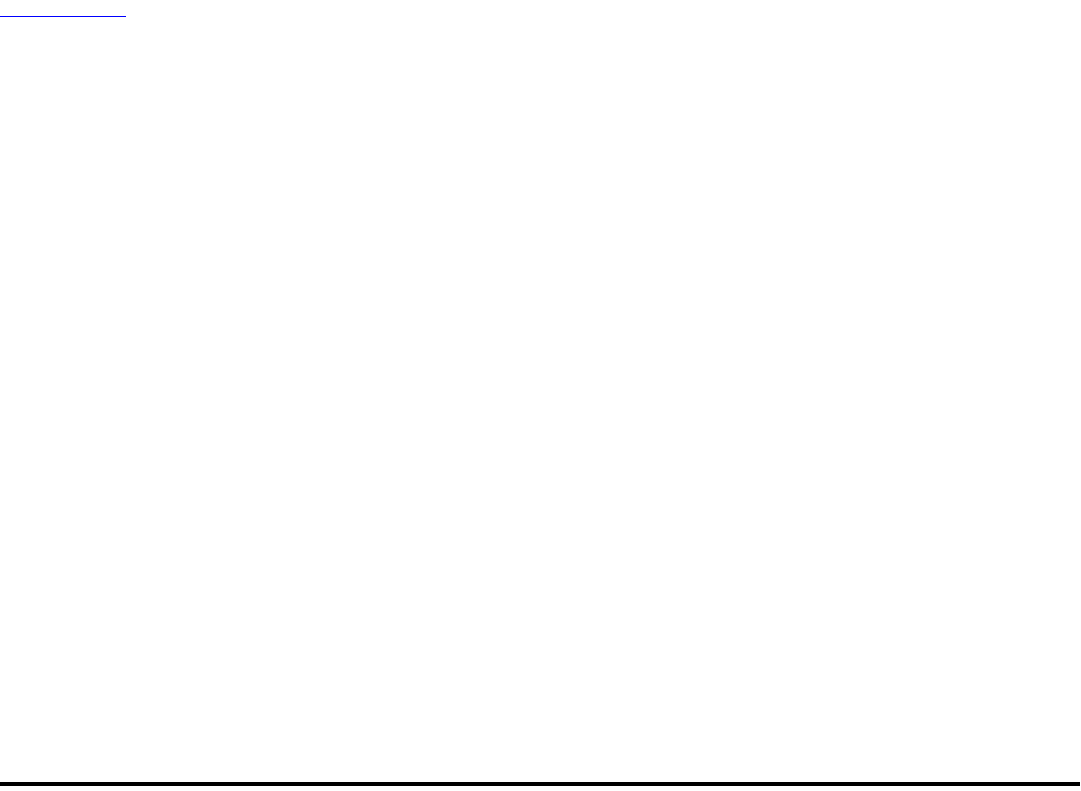
Table of Contents
ABERCROMBIE & FITCH CO.
NOTES TO CONSOLIDATED FINANCIAL STATEMENTS — (Continued)
retrospectively. The extent to which a hedging instrument has been and is expected to continue to be effective at achieving offsetting
changes in fair value or cash flows is assessed and documented at least quarterly. Any hedge ineffectiveness is reported in current
period earnings and hedge accounting is discontinued if it is determined that the derivative is not highly effective.
For derivatives that either do not qualify for hedge accounting or are not designated as hedges, all changes in the fair value of the
derivative are recognized in earnings. For qualifying cash flow hedges, the effective portion of the change in the fair value of the
derivative is recorded as a component of Other Comprehensive Income ("OCI") and recognized in earnings when the hedged cash
flows affect earnings. The ineffective portion of the derivative gain or loss, as well as changes in the fair value of the derivative's time
value are recognized in current period earnings. The effectiveness of the hedge is assessed based on changes in the fair value
attributable to changes in spot prices. The changes in the fair value of the derivative contract related to the changes in the difference
between the spot price and the forward price are excluded from the assessment of hedge effectiveness and are also recognized in
current period earnings. If the cash flow hedge relationship is terminated, the derivative gains or losses that are deferred in OCI will be
recognized in earnings when the hedged cash flows occur. However, for cash flow hedges that are terminated because the forecasted
transaction is not expected to occur in the original specified time period, or a two-month period thereafter, the derivative gains or
losses are immediately recognized in earnings. The Company recognized a gain of $0.7 million reclassified into earnings as a result of
the de-designation of certain cash flow hedges during the fifty-two weeks ended January 29, 2011.
The Company uses derivative instruments, primarily forward contracts designated as cash flow hedges, to hedge the foreign
currency exposure associated with forecasted foreign-currency-denominated intercompany inventory sales to foreign subsidiaries and
the related settlement of the foreign-currency-denominated inter-company receivable. Fluctuations in exchange rates will either
increase or decrease the Company's U.S. dollar equivalent cash flows and affect the Company's U.S. dollar earnings. Gains or losses
on the foreign exchange forward contracts that are used to hedge these exposures are expected to partially offset this variability.
Foreign exchange forward contracts represent agreements to exchange the currency of one country for the currency of another country
at an agreed-upon settlement date. As of January 29, 2011, the maximum length of time over which forecasted foreign-currency-
denominated inter-company inventory sales were hedged was twelve months. The sale of the inventory to the Company's customers
will result in the reclassification of related derivative gains and losses that are reported in Accumulated Other Comprehensive Income
(Loss). Substantially all of the remaining unrealized gains or losses related to foreign-currency-denominated inter-company inventory
sales that have occurred as of January 29, 2011 will be recognized in costs of goods sold over the following two months at the values
at the date the inventory was sold to the respective subsidiary.
The Company nets derivative assets and liabilities on the Consolidated Balance Sheets to the extent that master netting
arrangements meet the specific accounting requirements set forth by U.S. GAAP.
As of January 29, 2011, the Company had the following outstanding foreign exchange forward contracts that were entered to
hedge either a portion of forecasted foreign-currency-denominated inter-company
86


